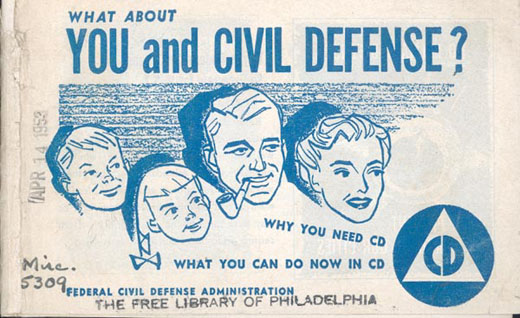FPI / March 23, 2020
Commentary by Paul Crespo
The Chinese Wuhan coronavirus (COVID-19) is causing death and disruption throughout the U.S., and worldwide, and is expected to worsen before it gets better.
We must do everything we can to contain this pandemic and save lives now. However, while we fight this current battle, the U.S. should wake up to the need for a revitalized national Civil Defense system to prepare and protect our country from the next deadly crisis. This is what many now call a “whole of society” approach.

Despite various natural catastrophes, terror attacks, and now a global pandemic, the U.S. has not had a viable national Civil Defense System since the 1960s.
Ever since the U.S. and Soviet Union decided on Mutually Assured Destruction (MAD) as their nuclear war policy default, Civil Defense was deemed irrelevant, or counterproductive. If both our populations were to be held hostage to nuclear strikes – the thinking went – protecting our people was not seen as helpful. Even after the Cold War ended, though, the antiquated thinking remained.
This pandemic should show us that, now more than ever, the nation needs a revitalized, well-organized, Civil Defense program. The next pandemic, natural disaster, or cyberattack could be devastating. To begin with the U.S. government, state governments, academia and the private sector should be using this unique pandemic as a real-world “wargame” to prepare for the next, possibly far worse crisis. We have already done lots of things right — and made many errors at all levels of government and private sector. We should be learning from all of them.
We have had very recent “practice” pandemic wargames. As Fortune reported, for example, on Sept. 17, 2019 the U.S. Naval War College and the National Center for Disaster Medicine & Public Health ran a two day war-game simulation with 50 experts in disaster response from the government, military, academia, and the private and nonprofit sectors at Johns Hopkins University’s Applied Physics Lab in Maryland. The exercise was called “Urban Outbreak.”
The federal government also ran its own series of pandemic exercises in 2019 culminating in the August “Crimson Contagion” Functional Exercise, described in documents obtained by The New York Times as — “a four-day, multi-state, and multi-regional exercise that focused on whole-of-community response and policy issues of workforce viability; critical infrastructure protection; economic impact; social distancing; scarce resource allocation; prioritization of vaccines and other countermeasures; available (or potentially available) funding streams or mechanisms to fund the response; and medical surge operations.”
And earlier, in 2017, as part of the Presidential Transition’s massive data dump of briefings, President Donald Trump’s incoming team was presented with a scenario eerily similar to the current COVID-19 pandemic. According to Politico, “the Trump team was told it could face specific challenges, such as shortages of ventilators, anti-viral drugs and other medical essentials, and that having a coordinated, unified national response was ‘paramount.’ ”
Some are using that briefing to attack the president’s current handling of COVID-19, but this was only one of many realistic, but still hypothetical, crisis scenarios the new administration was briefed on during the hectic transition, along with more immediate, deadly threats from North Korea, Iran, China, Russia and ISIS.
But now we are dealing with a real global pandemic directly impacting the U.S., observing how all levels of government, private sector entities, the health system, supply chains, the media, disinformation, and nefarious foreign actors, like China and Russia, act, and react, all in in real time.
Along with lessons from recent practice wargames, we should be studying and classifying all these lessons and observations from this real wargame, to develop a national “post-Wuhan Virus Pandemic” plan to prepare for the next major national emergency.
This new strategic plan should include a modernized version of our old Civil Defense program that includes a “whole of society” approach with all levels of government, the military, national guard, schools, civil society, health system, private sector, and communities working in concert to prepare for and react to the next, worse crisis.
In this important regard, we should not let a good crisis go to waste.
Paul Crespo is CEO at SPECTRE Global Risk [http://www.spectreglobalrisk.com/] and Washington Editor of the Free Press Media Group [http://freepressmediagroup.com/]
Intelligence Brief __________ Replace The Media
